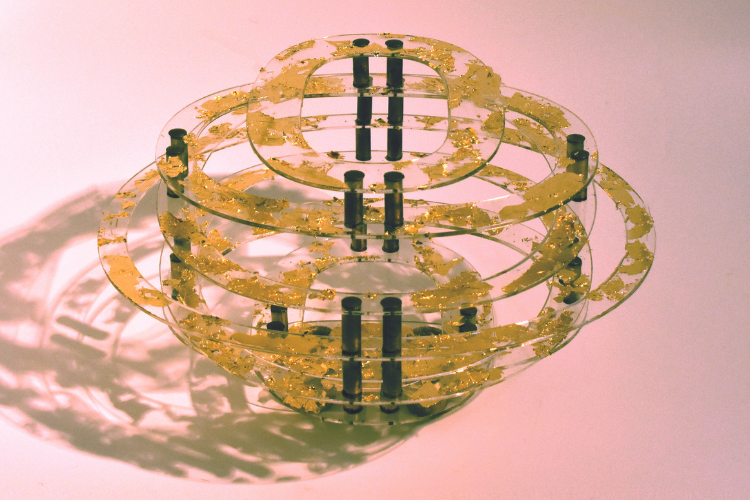
Can Art Change the World?
Do artists have a responsibility to address social issues? If they do, can their creativity motivate us to heal our world? Two exhibitions at the Heller Museum at Hebrew Union College-Jewish Institute of Religion (HUC-JIR) in New York offer new artistic responses to these questions.
The works in these two exhibitions share a common purpose, but the scale, forms, materials, and personal outlooks vary. They are rooted in Jewish text, ethics, wisdom, and family history, while exerting a universal message of justice, compassion, and healing. One Nation and Tzedek Boxes exemplify the Heller Museum’s mission: to encourage the interpretation and renewal of Jewish values, tradition, and practice through the creativity of contemporary artists that will advance justice in our world.
One Nation (closing June 29) features works by 48 artists confronting the systemic racism, attacks on human rights, and rising antisemitism that divide our nation. Their subjects include the immigration and refugee crises, the January 6th storming of our Capitol, prison reform, and the reactionary pushback to diversity in our country.
They also express America’s capacity for resilience and healing when we embrace our differences to forge a more just society.
Tzedek Boxes: Justice Shall You Pursue (closing June 15) launches a new Jewish ceremonial object, spurring us to answer the Jewish call for justice in Deuteronomy 16:20. Vessels contain an aperture in which to slip notes recording righteous deeds are to be opened on Pesach Sheini, the biblical holiday for second chances, to review our actions and motivate us to do more in the future, in an initiative led by Rabbi Andrew Mandel ’23, newly ordained by HUC-JIR. This exhibition builds upon our Museum’s groundbreaking Miriam’s Cups (1997) and Living in the Moment: Contemporary Artists Celebrate Jewish Time (2000), which introduced and popularized innovative Jewish ritual art.
One Nation
Ronit Levin Delgado, The Kissing of the Liberty, 2021

Composed of bright red lipstick kisses, this Statue of Liberty evokes feminine power and the immigrant artist’s appreciation for American rights, including the freedom of expression.
Beth Grossman, Searching for Democracy, 2012
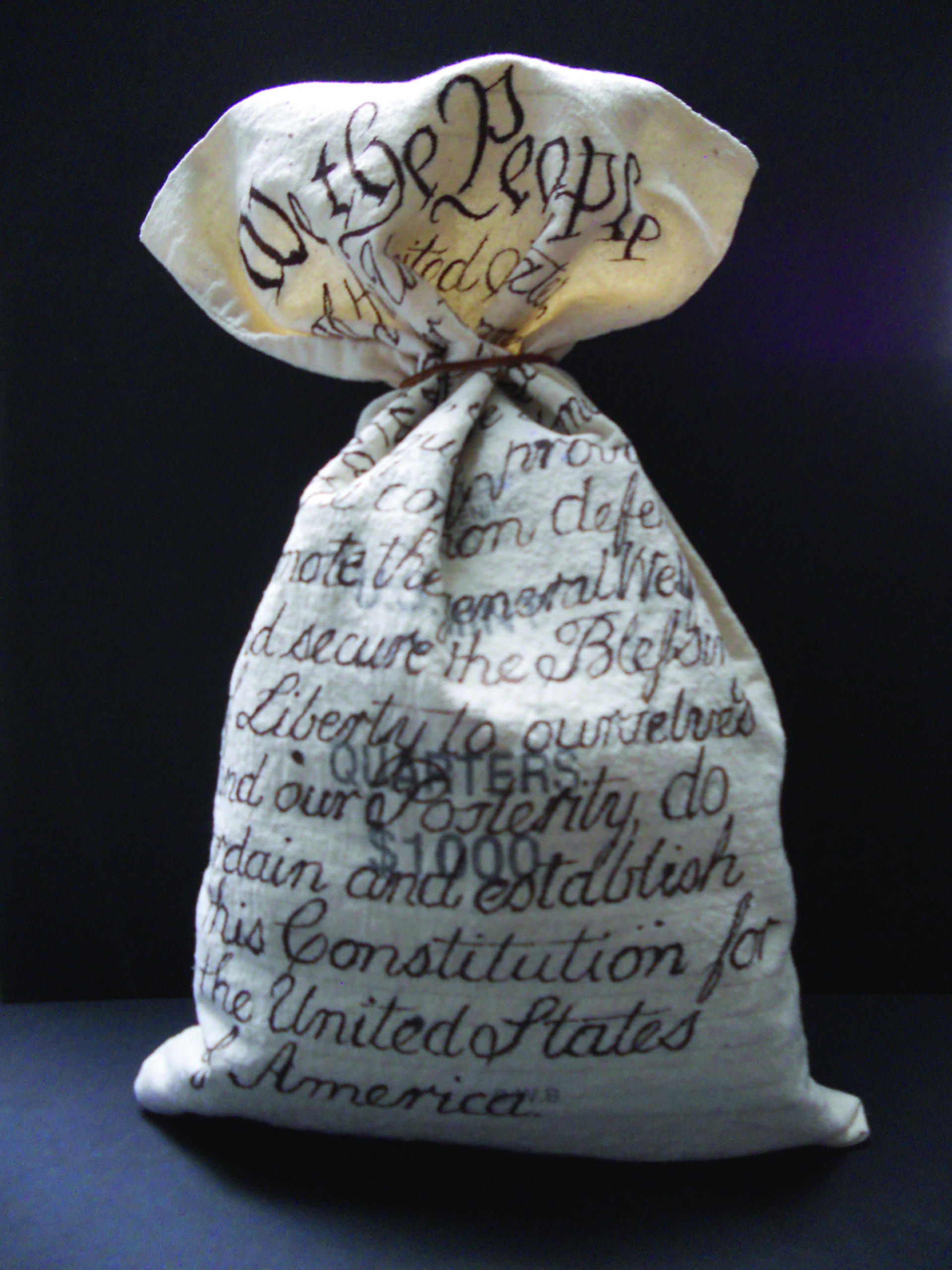
This U.S. Mint bank bag, inscribed with our Constitution’s values, alerts us to the dangers of money’s influence on our elections.
Debbie Teicholz Guedalia, Post No Hate, 2021
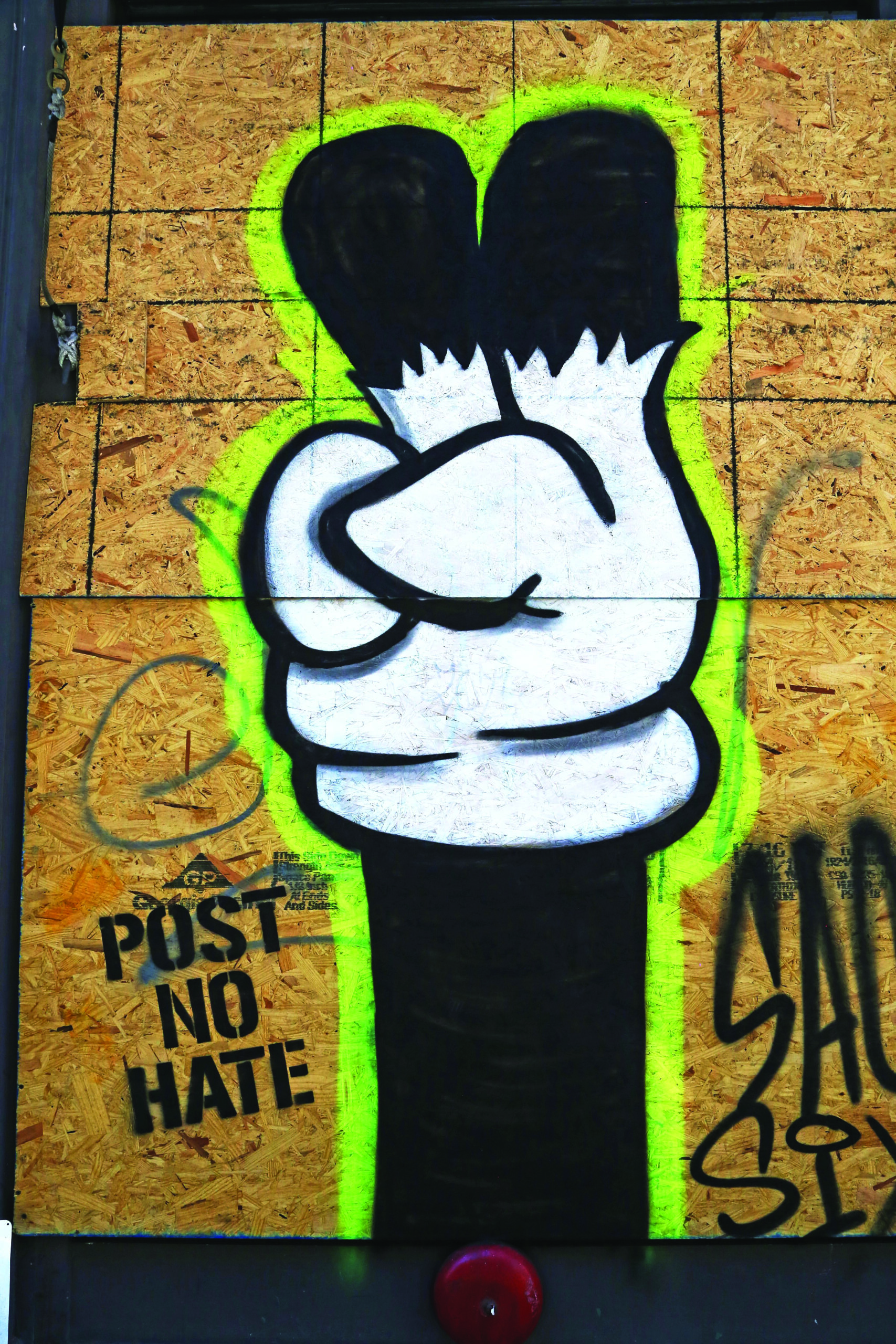
Masonite boards protecting store windows during the pandemic serve as urban canvases for graffiti artists’ advocacy for tolerance.
Elizabeth Langer, Sotomayor, J. Dissenting, 2022
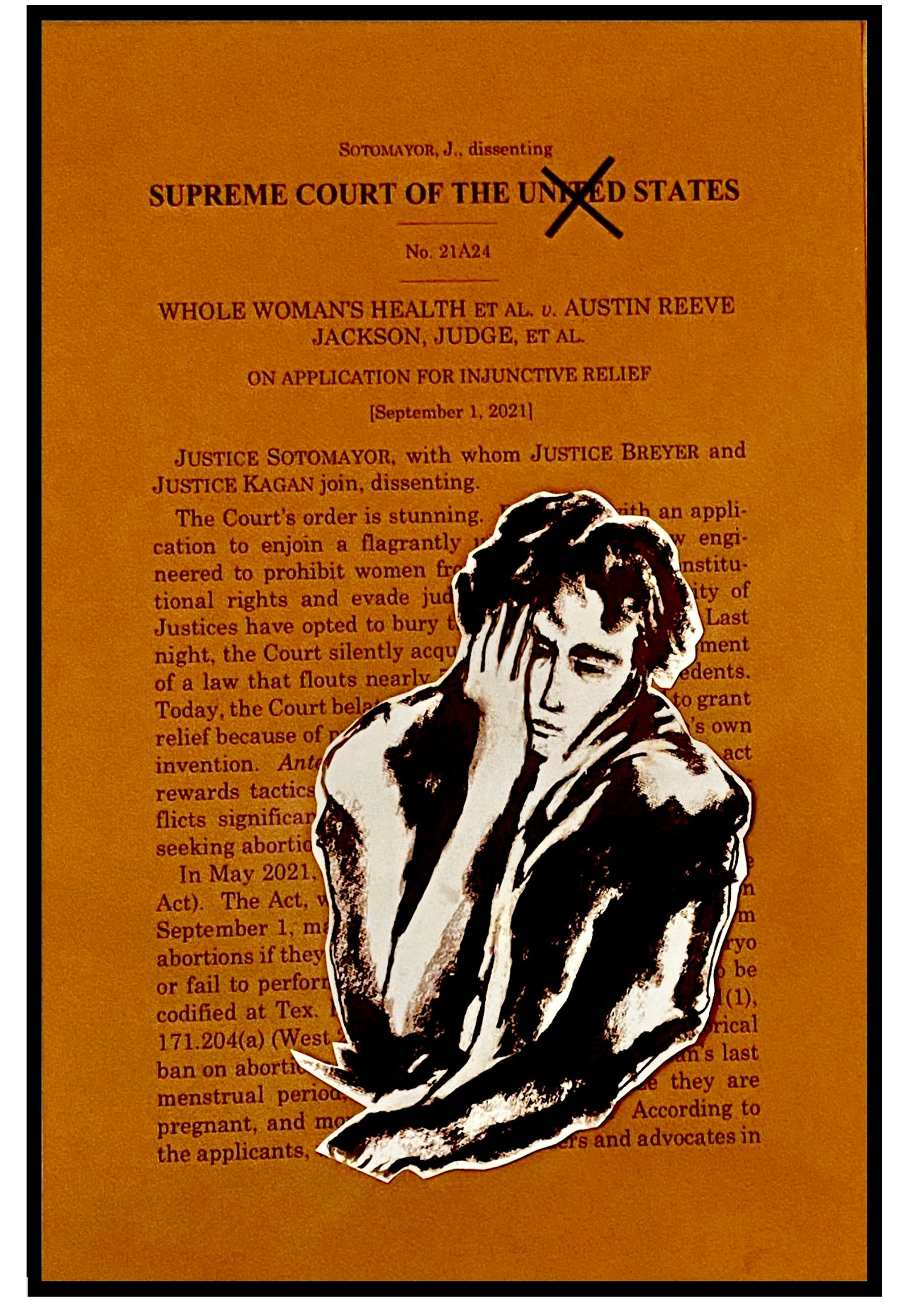
A distraught woman hovers over Justice Sotomayor’s dissent to the Supreme Court decision permitting Texas to ban women’s constitutional right to an abortion.
Miriam Stern, Pekelakh, 2020
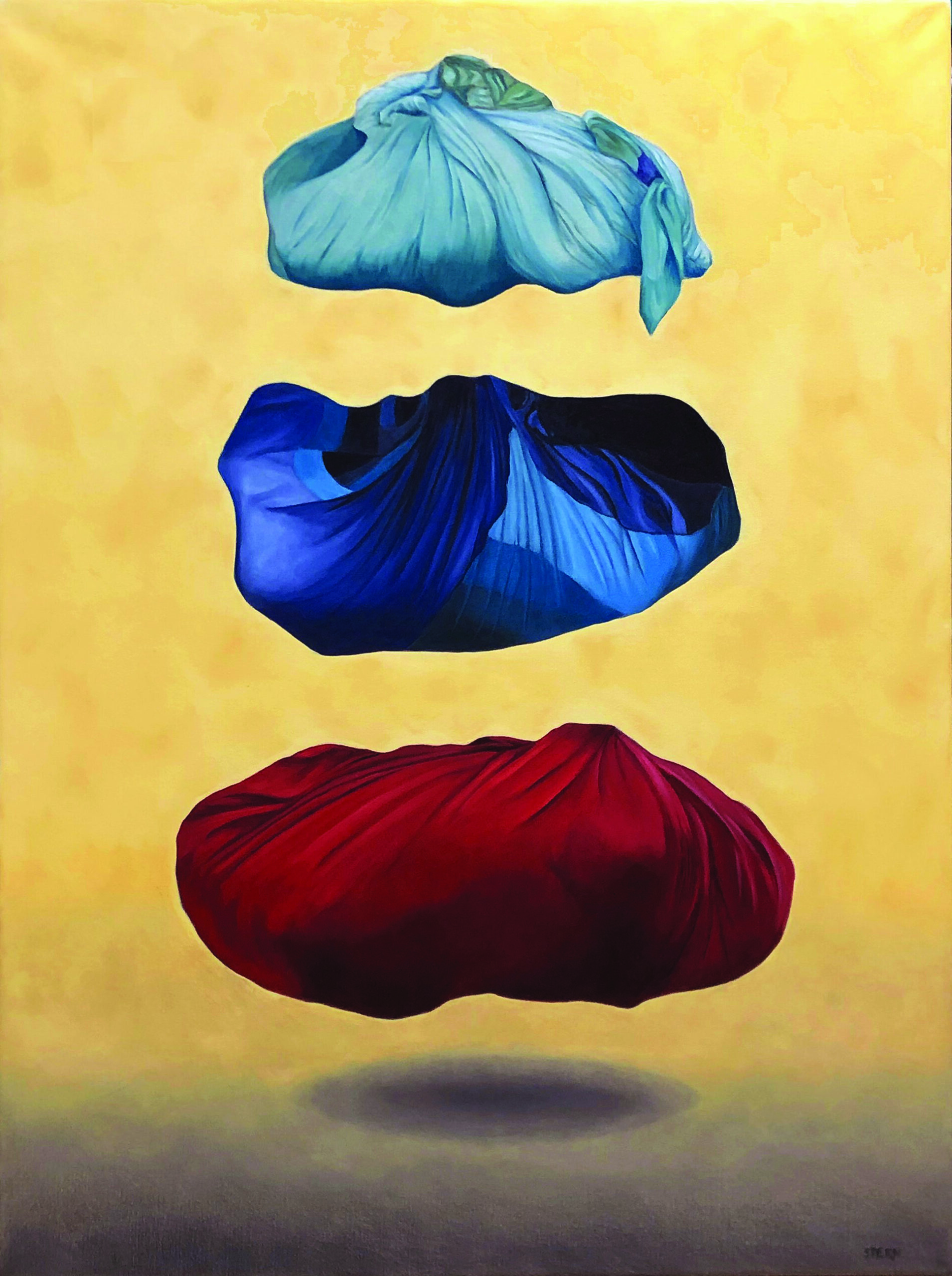
Immigrant and refugee bundles, evoking wandering, loss, expulsion, and relocation, challenge us to confront our attitudes toward racism and injustice.
Tzedek Boxes: Justice Shall You Pursue
Mar Martinez, Vayakhel/And He Assembled, 2022
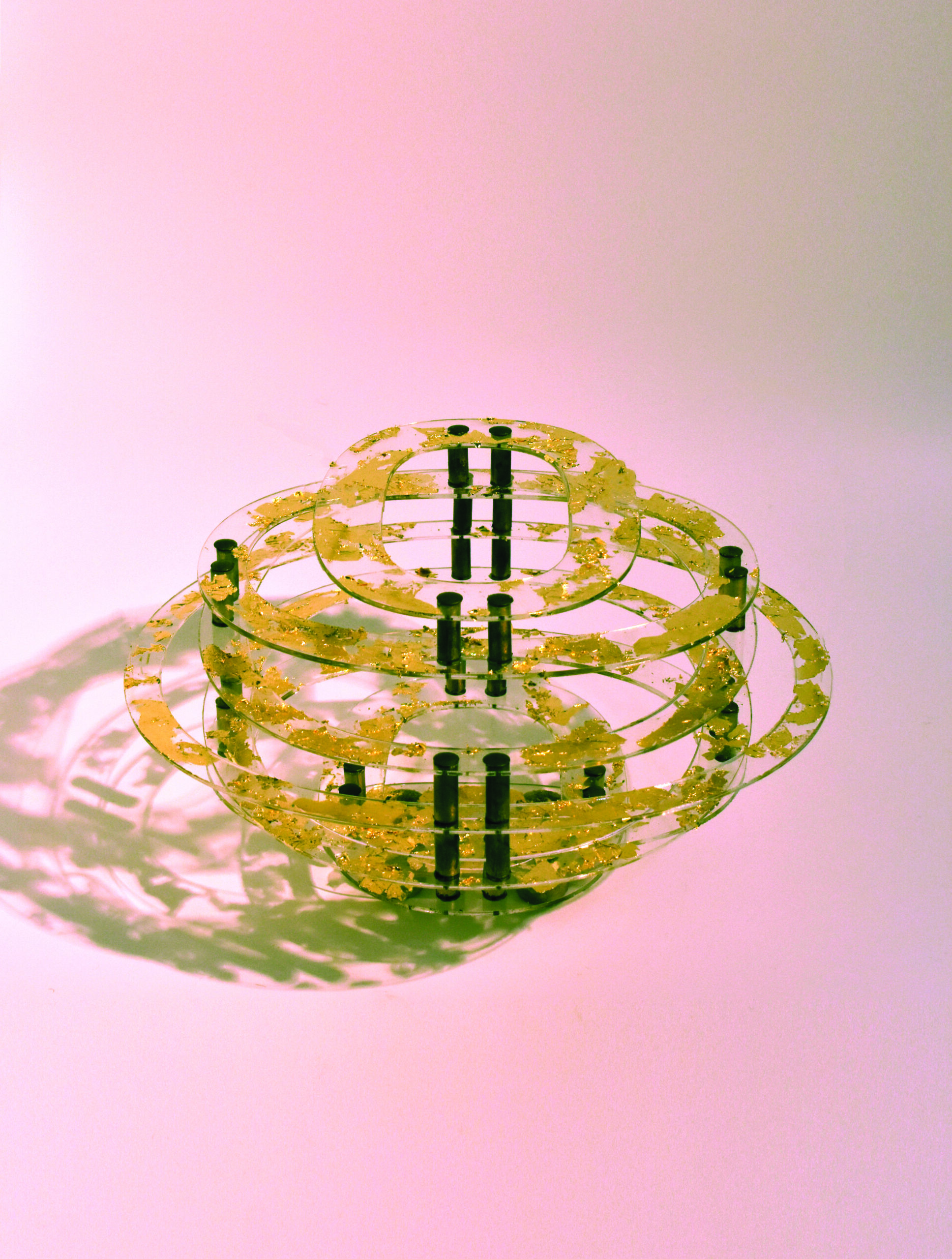
The gold-flecked acrylic concentric rings recall the precious gold the Israelites contributed toward the collective, collaborative construction of the mishkan (tabernacle) in the desert.
Marisa Baggett, Freeflow, 2022 (acrylic, silver leaf, resin)
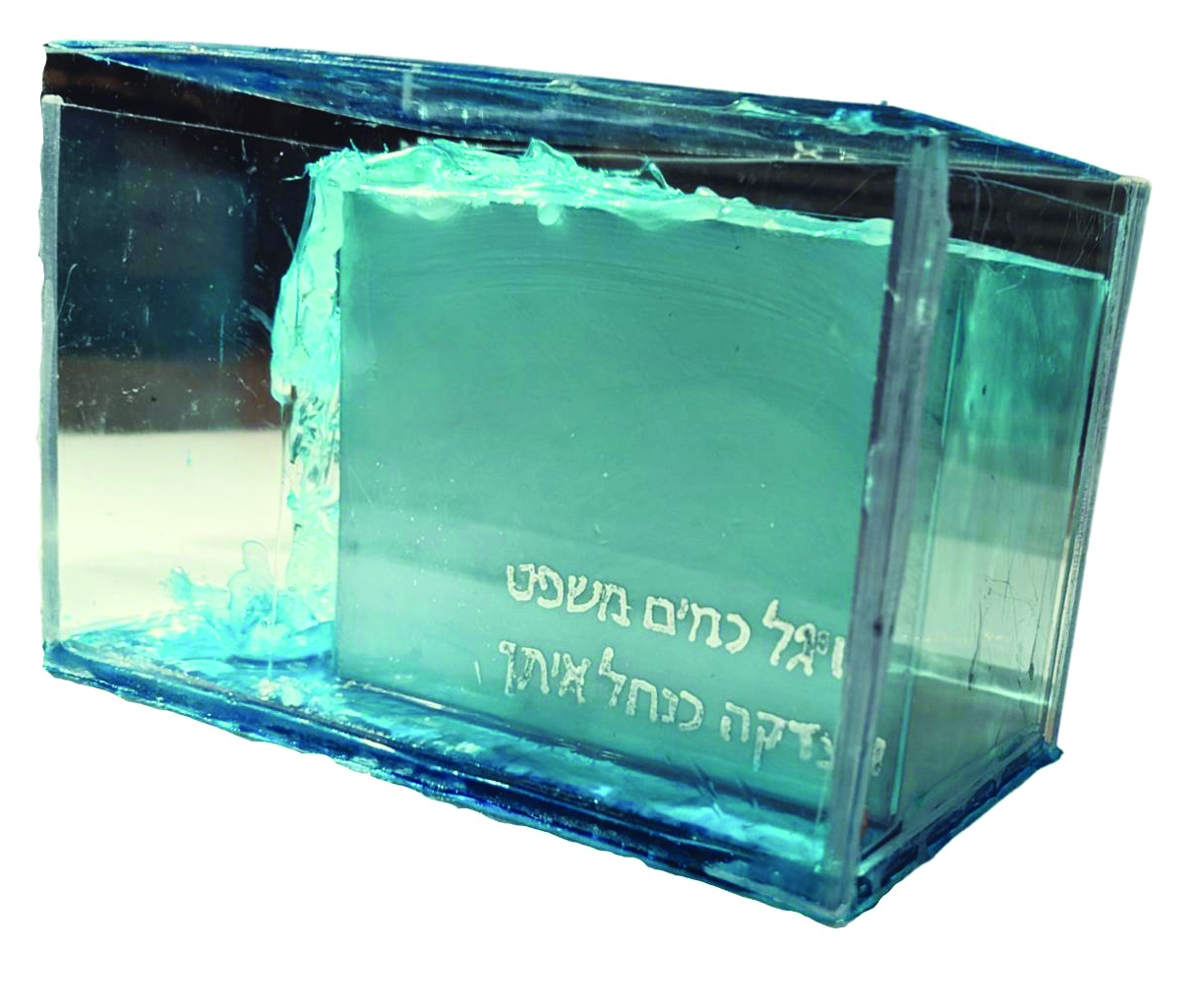
Just as water, when blocked, works its way to create a new path, justice must flow freely to fulfill the prophetic command in Amos 5:24: “But let justice well up like water, and righteousness like an unfailing stream.”
Judith Brown, Gifts of Justice, Sparks of Awe, 2022 (artglass, walnut hardwood)
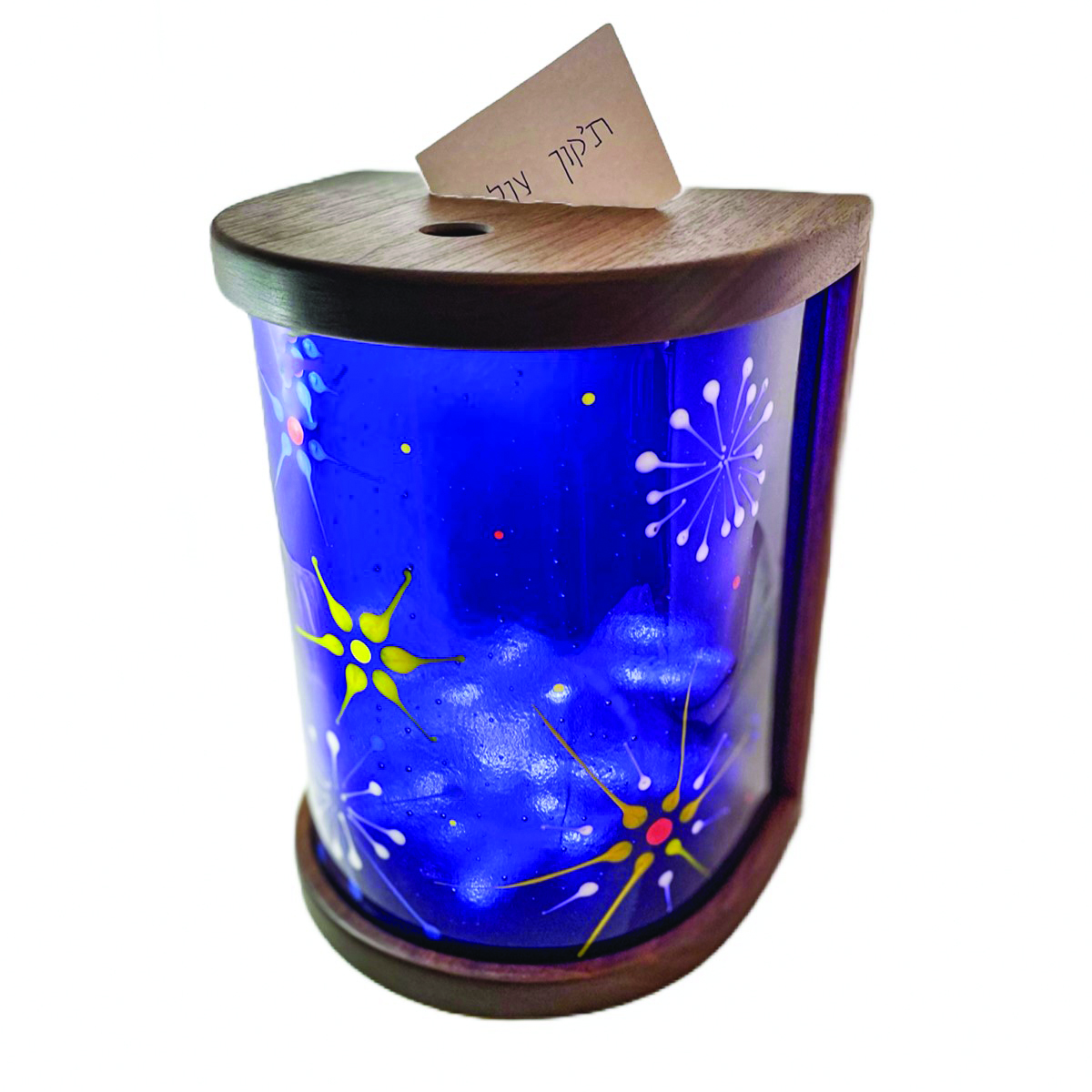
Dedicated to regathering the sparks of creation, this vessel emits sparks of light whenever a righteous deed is inserted, as inspired by Psalm 97:11 and Psalm 36:10: “Plant seeds of light by doing right…in your light, we see light.”
Susan Dessel, Ha Lamaot (The Whys), 2022 (wood, linen, archival ink micrography)

An open, heart-shaped vessel with the micrographic inscription of tzedek tzedek tirdof, justice shall you pursue, connects our emotional motivation with our investment of time, energy, and resources to effect positive change.
Dorit Jordan Dotan and Judith Joseph, Cast our Bread Upon the Waters, 2022 (photographs and bottle installation and video link)

Righteous deeds and intentions, inscribed in Hebrew and English on strips of paper joined like prayer flags, are sealed in a bottle set upon the Mediterranean Sea to reach an unknown shore where it will inspire another human being to take action.
Holly Berger Markhoff, Justice Knows No Other, 2022
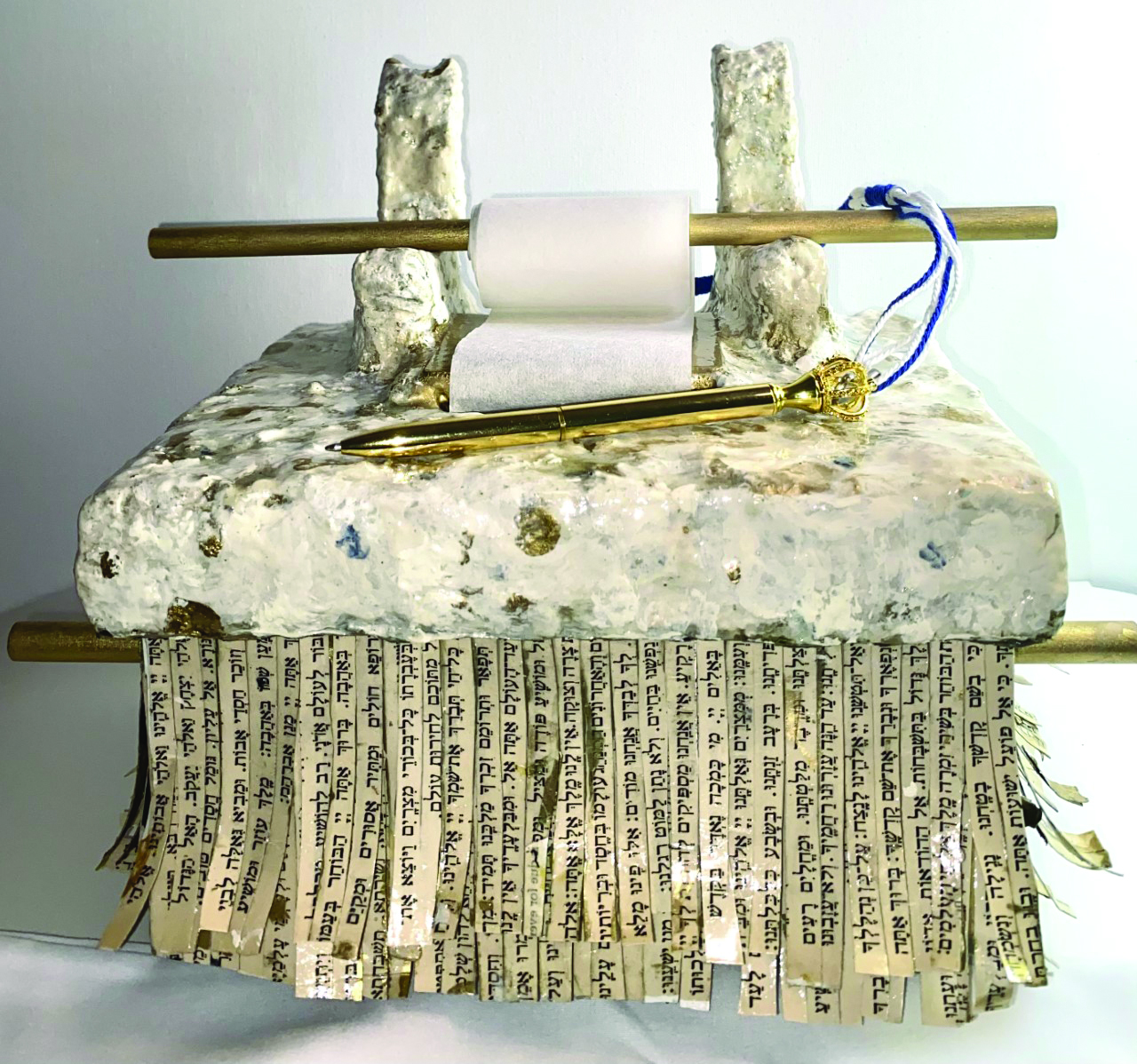
Fragments of prayerbooks from a genizah (storage of damaged or discarded sacred books and relics) generate wholeness and holiness, while an interactive scroll records our deeds in a continuous chronicle of righteousness.
Tina Marcus, The Collection Box, 2010
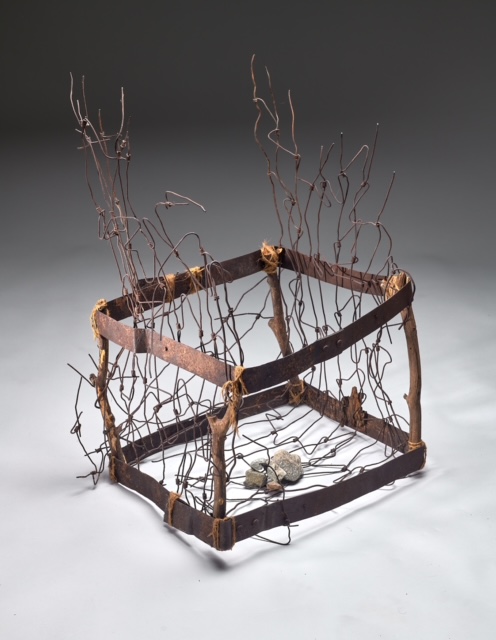
Barbed wire and jagged, rusted metal holding stones from the Dachau concentration camp express the imperative of “never again” by taking action in our own time.
Download the free Bloomberg Connects app for the Heller Museum’s audio guides to these exhibitions.
Heller Museum
Location: One West Fourth Street, New York, NY 10012
Hours: Mondays-Thursdays, 9 am – 7 pm
Admission: Free
Group Tours/Information: 212-824-2218; hellermuseum@huc.edu



